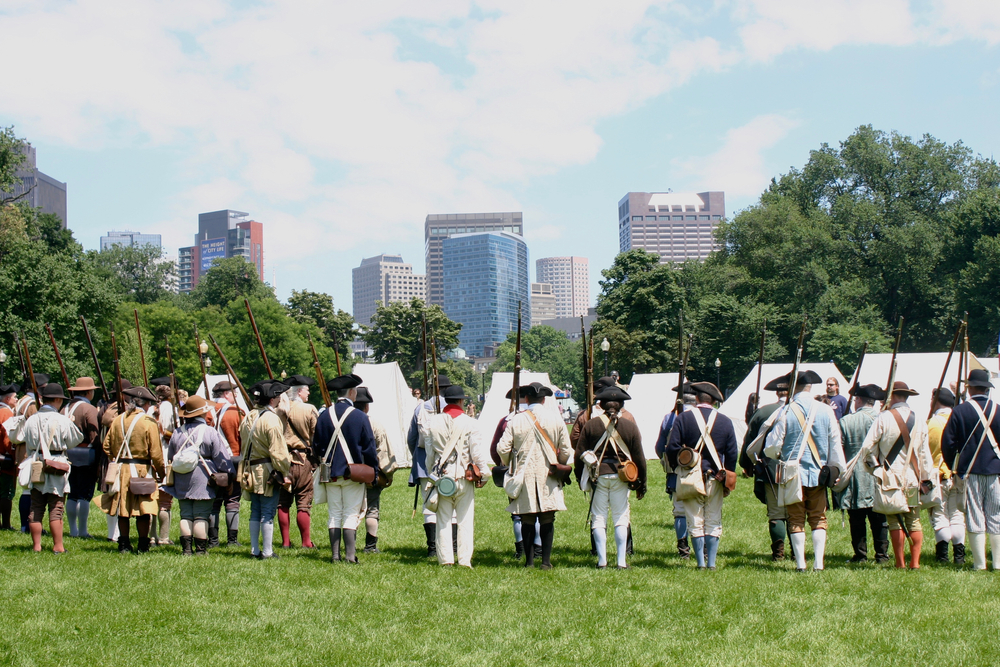Time To Re-Imagine the Second Amendment
Lawmakers, Law-breakers, and Violence
Unless you have been living under a rock, you are probably aware of the calls from lawmakers and gun safety advocates to address gun violence through common sense gun laws. The oft-stated rationale is to thwart increasing gun violence (or perhaps more grammatically correct rationally, “gun-violence”). The common sense gun laws advocated by most voices are universal background checks, prohibiting civilians from owning military style assault weapons, and prohibiting the possession of magazines that hold more than x bullets (x usually being 10, 7, or 3).
The universal background check would ensure recipients in gun transfers are not prohibited from legally possessing them. A universal background check would also ensure the transfer would be documented for prima facie evidence as to the legal eligibility of the recipient.
(Edited 8/9/2021) The prohibition of military style assault weapons would keep guns capable of shooting multiple shots with only successive pulls of the trigger out of civilian possession. Single shot, lever and bolt action guns would be exempt from the prohibition since they require a separate manipulation to make the gun ready to fire before each shot.
Limiting magazines to 3, 7, or 10 bullets would ensure the addition of an extra manipulation of the gun to continue firing past the magazine limit. More manipulations equate to more pauses when shooting so shooters could be interrupted with reduced risk to law enforcement.
(Edited 8/9/2021) Anecdotally, it is not surprising personal assaults increase amid other societal calls to de-fund the police. Reduced presence of law enforcement, whether real or imagined, emboldens those who desire to prey on other people for gain or revenge. Tautologically, law-breakers do not comport to the rules established through legislation (a long-winded way of saying, “law-breakers do not obey the law”).
The Anachronism of Private Gun Ownership
It is obvious from the civilized countries of the world that strictly regulated gun ownership reduces gun related crimes and deaths. The U. N. recognized gun ownership is dangerous to the human condition, and requested countries world-wide to curtail and monitor gun imports, exports, and use (Arms Trade Treaty). Multiple experts in the U. S. contend gun control is a public health issue (NBC News, “Gun control is a public health issue,” Maggie Fox, Jan. 5, 2016). Even China scolded the U. S.: “The U.S. has no other choice but to adopt gun control. The right of life is the most fundamental (of) human rights. The right to bear arms cannot overpower the individual’s right to live” (Reuters, “Chinese paper says U.S. should learn from China, restrict guns, protect rights,” Reuters staff, Feb., 22, 2018). In the face of the global recognition that gun control is fundamentally essential to the right to life, and a public health crisis private gun ownership surely has to be an anachronism, and thus curtailed.
Militia or Individual Right to Bear Arms
The first two clauses of Amendment II to the Constitution of the United States state, “A well regulated Militia, being necessary to the security of a free State. . . .” Obviously, since the security of a free State, where “State” equates to the newly established union of independent states, depends upon an armed militia, then the right to keep and bear arms necessarily refers solely to the militia, and not to any private citizen. It is also quite obvious that militias have been superseded by the National Guard, and the Armed Forces. It, therefore, necessarily follows that only the National Guard and the Armed Forces are guaranteed the right to keep and bear arms. Individual ownership is not protected, and can therefore, rightly, be strictly controlled, and still conform to the requirements of the Constitution.
Oh, Those Pesky Court Decisions. . . .
We live under systems of government that recognize and observe common law, even if done so unevenly.
In 2008, the Supreme Court of the United States concluded in majority opinion, “the Second Amendment protects an individual right to possess a firearm unconnected with service in a militia, and to use that arm for traditionally lawful purposes, such as self-defense within the home” (District of Columbia v. Heller [No. 07-290]
478 F. 3d 370, affirmed). So, it seems that the 2d Amendment does protect the individual right to keep and bear arms.
Historic Off Shore Threats and a New Urbanity
Two oceans help defend the United States against aggression. Combined amphibious assaults are notoriously hard to pull off, even in the day of parachute assault troops that can be inserted behind the shore assault to seize key military objectives.
During World War II, Japanese Admiral Isoroku Yamamato is reputed to have said, “You cannot invade the mainland United States. There would be a rifle behind every blade of grass.” The implication behind Admiral Yamamoto’s observation is that any force attempting to invade the U. S. would not only face the organized military forces of the United States, but they would also have to confront an armed citizenry.
However, the U. S. has changed significantly since WWII. Urbanization has increased. The east and west coasts transformed into two megalopolises. Urbanization eliminates the necessity of firearm ownership for sustenance. Recreational ownership becomes more difficult as places to shoot disappear in the urban jungle. Following the influences of media and pop-stars, firearm ownership became anachronistic, an unnecessary and shameful relic of insular people clinging to their bibles and guns, and a reminder, of an oppressive era in American life.
A New Threat: China
On December 3d, the Wall Street Journal ran an opinion commentary by the Director of National Intelligence, John Ratcliffe (WallStreet Journal, “China is National Security Threar No. 1,” John Ratcliffe, December 3, 2020). After citing his credentials to ground his assertion, Mr. Ratcliffe wrote, “Beijing intends to dominate the U.S. and the rest of the planet economically, militarily and technologically.” After giving examples of China’s intelligence, economic, and military efforts, Mr. Ratcliffe concluded, “Beijing is preparing for an open-ended period of confrontation with the U.S.”
If we take seriously Mr. Ratcliffe’s warning, coupled with the Chinese Communist Party’s own assertion that gun ownership in the U. S. is dangerous, we might do well to also remember Admiral Yamamato’s reputed comment, and its implied reticence to physically invade the continental U. S.
A Time to Re-Imagine the Second Amendment
It might, therefore, be time to re-imagine the Second Amendment, abandon efforts to thwart private gun ownership, and return to having “a rifle behind every blade of grass,” as well as every urban window.

